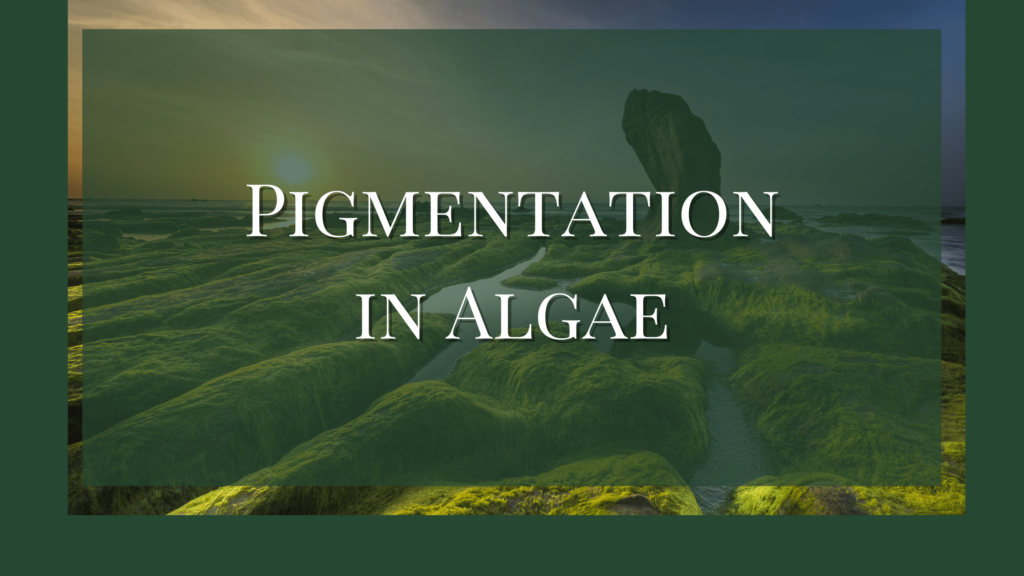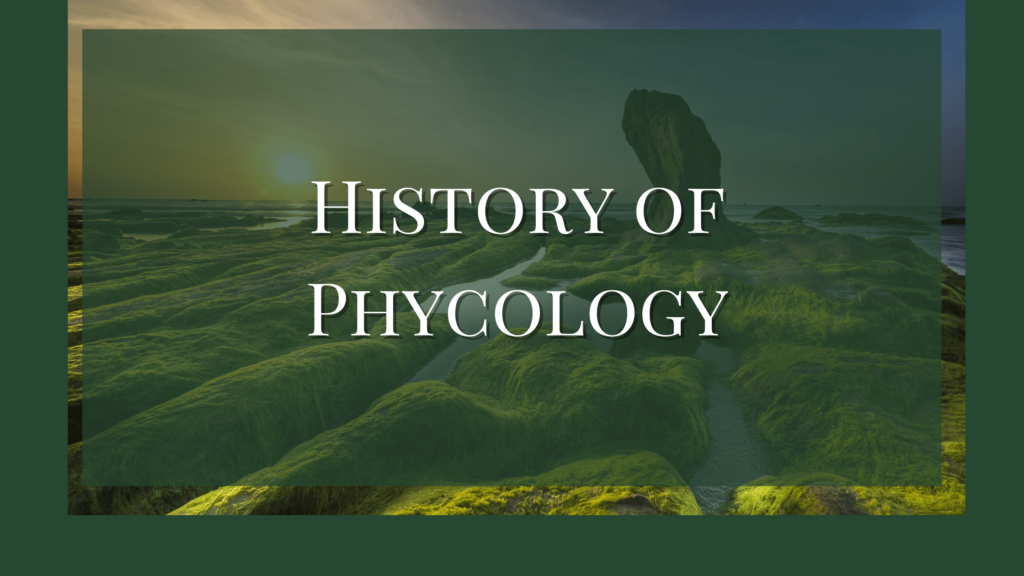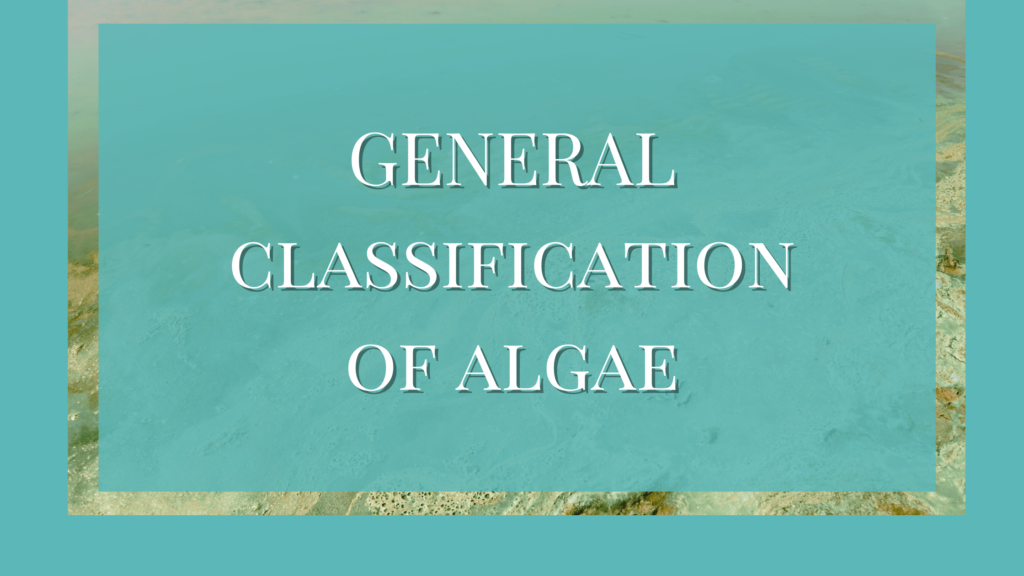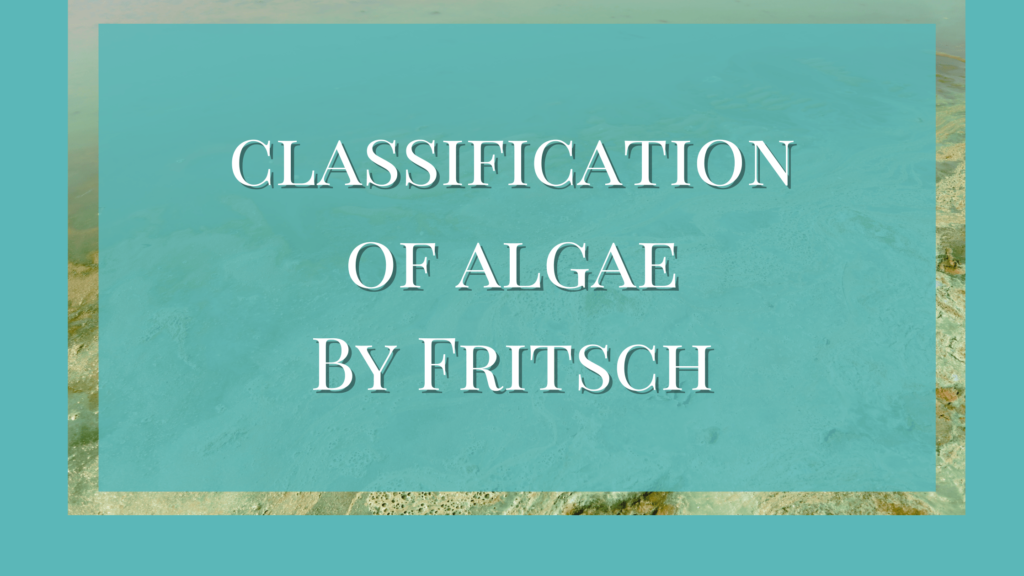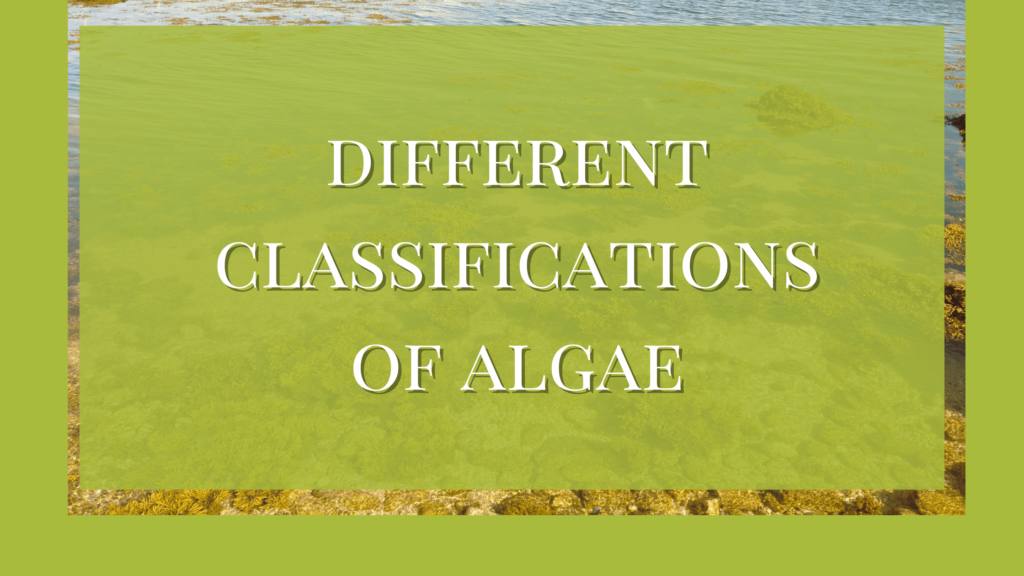All algae have a certain type or types of pigments in their cells that impart their unique color. These pigments absorb light of all colors except the one, that the pigment reflects. This reflected light is what makes them their characteristic color.
Pigmentation in algae differs from the algal divisions. Each division has a unique combination of pigments and reserve food material. Both these factors are significant parts of the characteristics of algae in each group.
The pigments exist in special plastids called chromatophores and are often seen in a specific combination. The main types of pigments are chlorophyll, carotenoids, and phycobilins. Each of these may be further divided. Algae of different divisions, classes, and families may have a combination of any of these.
Variations in Pigmentation in Algae
| # | DIVISION/CLASS | PIGMENTS | FOOD RESERVES |
| 1 | Cyanophyceae | Chlorophyll a, β-carotene, c-phycoerythrin, allophycocyanin, e-phycoerythrin | Polyglucan granules, are often enriched with amino acids such as arginine, aspartate, cyanophycin. |
| 2 | Prochlorophyta | Chlorophyll a and b, β-carotene, zeaxanthin, cryptoxanthin | Starch |
| 3 | Rhodophyceae | Chlorophyll a and d, 𝛾-phycocyanin, allophycocyanin, c-phycoerythrin, ⍺ and β carotenes. | Floridian starch |
| 4 | Chrysophyceae | Chlorophyll a, c/c2, fucoxanthin | Chrysolaminarin (β-1,3 glucopyranoside) |
| 5 | Prymnesiophyceae | Chlorophyll a, c/c2, β-carotene | Chrysolaminarin |
| 6 | Xanthophyceae | Chlorophyll a, β-carotene, diatoxanthin, diadinoxanthin, histiroxanthin, vaucheria xanthin (chlorophyll c) | Oils |
| 7 | Eustigmatophyceae | Chlorophyll a, chlorophyll c, β-carotene, phialoxanthin and vaucheriaxanthin | Oils |
| 8. | Bacillariophyceae | Chlorophyll a, chlorophyll c, β-carotene,feucoxanthin,, diatoxanthin, diadinoxanthin | Chrysolaminarin, lipids |
| 9. | Dinophyceae | Chlorophyll a, chlorophyll c2, β-carotene,peridin, neoperidin | Starch |
| 10. | Desmophyceae | Chlorophyll a, chlorophyll c, chlorophyll c2, β-carotene, feucoxanthin | Laminarin, mannitop |
| 11. | Draphidophyceae | Clorophylla a, chlorophyll c2, diadinoxanthin, dinoxanthin, heteroxanthin | Polysaccharides, not known |
| 12. | Cryptophyceae | Chlorophyll a, chlorophyll c, β-carotene,, diatoxanthin, phycerythrin, phycocyanin | Starch-like substance |
| 13. | Euglenophyceae | Chlorophyll a, chlorophyll b, β-carotene, astraxanthin, antheraxanthin, diadinoxanthin, neoxanthin | Paramylon starch (β-1, 3 glucon) |
| 14. | Chlorophyceae | Chlorophyll a and b, carotenes- 𝛂, β and 𝜸, luetin, siphonoxanthin, siphonicin. | Starch |
| 15. | Charophyceae | Chlorophyll a and b, carotenes- 𝛂and 𝜸, xanthophylls | Starch |
| 16. | Brassinophyceae | Chlorophyll a and b, β-carotene, siphonicin, siphonoxanthin | Starch and mannitol |
The table above illustrates the distribution of photosynthetic pigments in various classes of algae in their oxygenic photosystems. The distribution of these pigments indicates evolutionary implications within different classes of algae.
Chlorophylls
Chlorophyll, the main photosynthetic pigment, is present in almost all algae but can be in different forms. Functional chlorophylls have four tetrapyrroles interlinked with each other, with a central magnesium atom and usually conjugated with some specific proteins. Chlorophyll a and b possess the long phytol chain while chlorophyll c lacks the chain. The various forms of chlorophyll are,
- Chlorophyll a is present in all eukaryotic algae as well as in prokaryotic Cyanophyceae and Prochlorophyceae.
- Chlorophyll b is seen only in Prokaryotic Prochlorophyceae and Eukaryotic Chlorophyceae, Charophyceae, and Prasinophyceae.
- Pyridine and neopyridinia are confined to dinoflagellates.
- Chlorophyll c is found in Cryptophyceae, Chrysophyceae, Bacillariophyceae, and Phaeophyceae.
- Chlorophyll d is present only in red algae.
- Chlorophyll e is seen in some Xanthophyceae.
In algae where chlorophyll b is absent, it is usually replaced by Chlorophyll c or its types. The substitution of the aldehyde group in one of the pyrrole rings of chlorophyll a with methyl groups confirms increased efficiency of light absorption in the blue region of the spectrum called chlorophyll b, where chlorophyll a has lesser absorption efficiency than chlorophyll b.
Similar properties are formed for chlorophyll c also, thus these pigments effectively replace chlorophyll b for efficient light harvesting for photosynthesis.
Carotenoids
Carotenoids are a group of pigments with colors such as red, brown, yellow, and orange. They are fat-soluble and are often associated with photoprotective roles. Their role is to protect chlorophyll from solarization, photooxidation, or photodamage. They also have strong antioxidant properties.
They can harvest light between the regions of blue and red by isoprenoid polyene pigments. These pigments are widely distributed in various classes. Many chlorophyte algae resemble higher plants in their carotenoid composition.
There are more than 60 carotenoids that have been reported thus far. But for convenience, they are classified into two categories- the orange-yellow carotenes, and yellow-brown xanthophylls.
Carotene
Carotenes are unsaturated hydrocarbons with a formula C40H56. They lack oxygen and absorb blue and green light. They reflect red and yellow light. The different types of carotenes are,
- α-carotene is seen in Chlorophyceae, Cryptophyceae, and Rhodophyceae.
- β-carotene is present in all algae except Cryptophyceae.
- Lycopene
Examples of a few more carotenoids found in algae are astaxanthin, β-cryptoxanthin, canthaxanthin, fucoxanthin, lutein, and zeaxanthin. These are also known to have antioxidant properties.
Among these astraxanthin holds more importance, which is commercially extracted from Chlorella zofingiensis.
Xanthophyll
Other classes of algae show a predominance of xanthophylls. These are otherwise called carotenoids and are the oxygen derivatives of carotenes.
- Xeoxanthin and lutein are common in Rhodophyceae
- Violaxanthin- a natural pigment synthesized from zeaxanthin.
- Neoxanthin is an intermediate of abscisic acid biosynthesis seen in Chlorophyceae and Phaeophyceae.
- Phaeophyceae, Bacillariophyceae, and Chrysophyceae members have fucoxanthin as the most abundant xanthophylls.
- Myxoxanthophyll, myxoxanthin, and oscilloxanthin are present in Cyanophyceae.
Other algal xanthophylls include astaxanthin, canthaxanthin, fucoxanthin, and lutein. Some common sources of these pigments are Chlorella sps, Spirulina platensis, Botryococcus braunii, diatoms, dinoflagellates, etc.
Phycobilins
The water-soluble phycobilins are accessory pigments that are associated with phycobiliproteins. They are red or blue and thus seen in Red algae and some members of Cyanophyceae, Cryptophyceae, and Rhodophyceae.
To improve its efficiency, these pigments are seen in algae that live deep under the seawater. Their fluorescence effects reveal orange and red hues. These pigments differ from each other depending on their associated polypeptides. They are of two types.
- Phycocyanin is mainly found in Cyanophyceae with its blue-green pigmentation. It is not seen in red algae. It can absorb lights in the red, yellow, and green regions.
- Phycoerythrin is red-colored and can absorb green, blue, and yellow light while reflecting red light.
Photosystems in Algae
Pigmentation in algae is a significant part of their photosystems. Both PSI and PSII are believed to operate in algae as well. Few Cyanophyceaens can use sulfur as an electron donor. While the PSI has been demonstrated in algae, little has been understood about the PSII organization in algae, as higher plant pigments are organized into the antenna to receiver to transducer.
Chromatic adjustment and complementation do occur in algae. The organization of phycobilisomes indicates phycoerythrin and phycocyanin as peripheral pigments. Here, phycocyanin functions as a transducer pigment.
Pigments Production in Algae
Pigments in algae are produced during vegetative growth to help with light harvesting. They are also produced during stress. For example, canthaxanthin is produced during salt stress and astaxanthin is produced when light is more and under nitrogen stress.
Moreover, different environmental factors such as light intensity, photoperiod length, heavy metals, nutrient availability, temperature, salinity, pH, pesticides, etc., can affect the production of these pigments.
Algal pigments are also used to extract natural food colors. It is found to have immune-boosting properties. Humans can use them and avoid possible side effects.
Conclusion
Pigmentation had been one of the main criteria for the classification of algae by Fritsch. Each of the 11 classes of algae he assigned had a specific kind or a combination of pigments.
References
Algae as an emerging source of bioactive pigments
Additional Reading
- Cell Structure of Algae: Prokaryotic & Eukaryotic
- Range of Thallus Organization in Algae
- Flagella in Algae
